|
Rotten Library > History > Atomic Bomb
Atomic Bomb
Science had known about the atom since the days of ancient Greece, but the idea wasn't fully understood until the beginning of the 20th Century. After thousands of years of gestation, the idea for an atomic bomb — the catastrophic release of energy produced by a chain reaction of atoms splitting — came in 1933, when a physicist in Hungary named Leo Szilard figured it out. He even patented the idea. It might have taken millennia to come up with the notion of the atomic bomb, but it took just 12 years from the first public articulation of the idea to The Bomb's first public use to kill enemies in a war. After the atom was first split for energy in 1938, Albert Einstein wrote a letter to Franklin D. Roosevelt suggesting that atomic power could be a major source of energy in the very near future, adding:
Just one day before the Japanese attacked Pearl Harbor, launching the U.S. into World War II, Roosevelt made the fateful decision to put $2 billion toward the Manhattan Project, an effort to make the first nuclear weapon. The army assembed a team of the greatest scientific minds of the age — and the age was full of truly brilliant minds. They were charged with developing an A-Bomb before the Germans could. Led by General Leslie Groves and theoretical physicist J. Robert Oppenheimer, the team included scientific geniuses like Neils Bohr, who fled Germany to avoid making the bomb for Hitler; Enrico Fermi, credited with creating the first atomic fission reaction; Richard Feynman, a mathematical savant. With outside help from others, such as Einstein, the team set to work. The project also recruited a doctor, Stanford Warren, who was sidelined by secrecy rules and forced to sit by as project workers and civilians near project sites were treated to occasionally lethal doses of radiation. In many cases, victims simply weren't told the cause of their illness. In some cases, the victims weren't even told they were sick until after committees on national security had reviewed the implications of their illnesses. In 1944, as the actual bomb moved closer to completion, the Manhattan Project sponsored research into the effects of radiation by injecting unwitting patients with raw plutonium and other fun materials. The patients, who were generally healthy and hospitalized for things like broken bones, were not informed of these injections, even when they developed cancer and died. Scores of Americans were unknowingly dosed with radiation either intravenously or orally, all so that the Manhattan Project could learn that radiation was, in fact, dangerous. Midwifing the ApocalypseIn July of 1945, the Project had developed a prototype bomb, and the first test detonation took place in the desert of New Mexico.
The government subsequently lied about the atomic weapons research going on at Port Chicago and the weapons capacity it had at the time, lies which were only exposed in 1981 under a mountain of declassified documents. Coincidentally, the Navy even filmed the explosion, and the film shows a billowing mushroom cloud. Another tremendous coincidence was the fact that more than two-thirds of the enlisted men killed in the blast happened to be black, as were nearly all the enlisted men who took part in rescue operations afterward. And declassified documents released in the 1980s and 1990s showed that the U.S. government had a nasty habit of experimenting on African-Americans. Whatever happened at Port Chicago, the explosion that went into the Guiness Book of World Records came in 1945, near Alamogordo, New Mexico. The detonation there is certainly depicted with appropriate reverence, whether it was technically first or not. The bomb used at Alamogordo was code-named Trinity. Here's a fun fact: Very little was known about what the actual effect of an atomic explosion would be prior to its actual detonation. There was one theory, for instance, which suggested the detonation might spark a chain reaction that would burn up the entire atmosphere of the planet Earth, instantly and horrifically killing the entire human race in one fell stroke (and just about every other living thing as well). But great scientists don't let themselves be stopped by little worries like that. The test went forward. Enrico Fermi, one of the scientists on hand for Trinity, wrote an eyewitness account:
Dr. Kenneth Bainbridge, director of the test, was less poetic, or perhaps more so. On seeing the might of the explosion, he commented, "Now we are all sons-of-bitches." All Sons-of-BitchesBut the biggest son of a bitch of all would be Harry Truman. Within a month of the successful test, Truman trotted out his new toy against the Japanese. As early as spring of 1945, Truman had ordered up a list of possible targets for the atom bomb, which included Hiroshima, Nagasaki and two other Japanese cities.
Szilard felt a Japanese surrender could be achieved without the massive loss of life. Byrnes, who would subsequently become secretary of state, responded that the administration could hardly justify spending all this money on an atomic bomb and then not use the bomb to kill people; for the sake of future defense appropriations, the bomb must be used. By July, the Japanese were making frantic efforts to end the war, approaching the U.S. with peace proffers that were subsequently rejected. The Japanese were willing to do anything short of an unconditional surrender to get the war finished; their primary concern was maintaining the emperor's status. Despite these ongoing bids for peace, Truman was convinced that only an unconditional surrender would be sufficient. On July 21, he gave the order that the U.S. Army should employ atomic weapons against the Japanese. Truman's conduct throughout the decision-making process was either delusional or disingenuous. His diary entries were often wildly at odds with the facts. For instance, on July 25, he wrote:
"We have discovered the most terrible bomb in the history of the world. It may be the fire destruction prophesied in the Euphrates Valley era, after Noah and his fabulous ark. Anyway we think we have found the way to cause a disintegration of the atom. An experiment in the New Mexican desert was startling — to put it mildly. (...) This weapon is to be used against Japan between now and August 10. 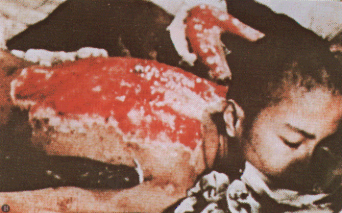
The target will be a purely military one and we will issue a warning statement asking the Japs to surrender and save lives. I'm sure they will not do that, but we will have given them the chance. It is certainly a good thing for the world that Hitler's crowd or Stalin's did not discover this atomic bomb. It seems to be the most terrible thing ever discovered, but it can be made the most useful.The "warning statement" turned out to be a pretty routine-sounding call for the Japanese to surrender or face "prompt and utter destruction." Not surprisingly, Japan rejected it. So the bombing would proceed, against two "military" targets — the cities of Hiroshima and Kokura (which would be replaced at the last minute by Nagasaki). On August 6, the U.S. B-29 bomber Enola Gay dropped an atomic bomb, which detonated almost 2,000 feet over Hiroshima, estimated to have killed at least 70,000 people (and possibly as many as 100,000) in an instant. Nearly 70,000 more were injured, most with hideous burns and radiation poisoning.
In an era where presidential honesty is a recurring issue, it's worth noting that Truman delivered the biggest whopper of all presidential lies in history, during a speech on August 9, announcing the use of the atomic bomb to the American people:
"The world will note that the first atomic bomb was dropped on Hiroshima, a military base. That was because we wished in this first attack to avoid, insofar as possible, the killing of civilians. But that attack is only a warning of things to come. If Japan does not surrender, bombs will have to be dropped on her war industries and, unfortunately, thousands of civilian lives will be lost. I urge Japanese civilians to leave industrial cities immediately, and save themselves from destruction."This was a blatant lie, although it's just barely concievable that Truman himself somehow believed Hiroshima was a base and not a city. In fact, more than 90% of the 150,000 plus people killed in the attack were civilians — the very women and children that Truman had indicated his concern for in his earlier diary entry. Truman got his unconditional surrender. Enter The Cold WarThe scariest fucking period in the history of the world began in the late 1940s, as the end of World War II also marked the end of the alliance between the U.S. and the Soviet Union. In 1949, the Soviets successfully tested their own atom bomb. And the race was on. In 1950, Truman authorized the use of atomic weapons in the Korean War, but the order was made moot when General Douglas McArthur was fired days later.
The scientific community, including Albert Einstein just before his death, began to organize protests and petitions urging the U.S. and U.S.S.R. to step back from the nuclear brink. But the nations, in the death grip of a lethal competition, instead accelerated their efforts to outgun the other. Great Britain and France became nuclear powers by the early 1960s as well, while the deadline game of chess between the U.S. and the Communists continued. In 1962, John F. Kennedy faced down a Russian effort to base atomic weapons in Cuba, bringing the world as close as it had ever been to meaningful annihilation. Kennedy demanded that Soviet Premier Nikita Khrushchev remove all missile bases from Cuba, and ordered the island state blockaded. Khrushchev responded by authorizing tactical nuclear strikes to repel any U.S. invasion of Cuba. Intelligence photos revealed that this was not an idle threat; the Soviets had missiles already in position to strike the continental U.S.
In 1964, China became the fifth nuclear power, as Lyndon B. Johnson's Defense Secretary Robert McNamara outlined an exciting new concept in international diplomacy: "Mutually Assured Destruction." This premise, which drove U.S. international relations for the next two decades, basically consisted of a pledge to forego any and all restraint in the event of a nuclear attack by a foreign power. If the U.S. got hit with a nuclear weapon, it would respond with such force as to render the Earth uninhabitable. Therefore, in theory, any such attack would be suicide. Therefore, in theory, no one would attack us. If this sounds like a lot of "theory" when the fate of humanity was at stake, well, you aren't the only one who thought so. Despite numerous international movements toward non-proliferation, the major powers continued to up the ante, building bigger and better nuclear weapons in order to insure that the other side was convinced the destruction would be "mutually assured." From Cold War to ChaosThe nuclear arsenals of both East and West ballooned throughout the 1970s and 1980s, reaching a size that could easily vaporize the surface of the earth several times over. In the late 1980s, one of those arsenals suddenly went up for grabs when the Soviet Union crumbled into bankruptcy, in part caused by its efforts to keep up with Ronald Reagan's science-fiction notion of a space-based missile defense.The Soviet Union fell apart in the early 1990s, and the succeeding republics struggled to keep the nuclear weapons under control. This was a lot easier said than done. Russia tried to corral as many of the weapons as they could, but occasionally alarming reports trickled out of the former Soviet bloc indicating that some fuel and weapons were not as well accounted for as one might hope.
Terrorist Organizations such as al Qaeda and the Aum cult in Japan tried to buy nuclear weapons and components from former Soviet states and various other sources. So far, it's believed that none of them have succeeded in finding any, but it's generally considered to be just a matter of time. Al Qaeda in particular has spent a lot of time and money trying to find uranium or other nuclear weapons fuel for a so-called "dirty bomb", or radiological dispersion device, which is a conventional bomb used to deliver a radioactive payload. It's not a genuine nuclear weapon in terms of destructiveness; the goal is instead to cover a wide geographic area with radioactive debris. Although it's generally thought that this wouldn't be massively lethal, it certainly wouldn't make people happy. The future of the nuclear arms race is decidedly unclear. Although the absence of the Cold War has resulted in a dramatic winnowing of nuclear arsenals and cutbacks to nuclear weapons research, it hasn't eliminated them. During recent military actions in Afghanistan and Iraq, the Bush administration refused to rule out the use of so-called "tactical" nuclear weapons, which have been a continued subject of research. Tactical nukes are (in theory) designed to produce very limited damage against heavily fortified targets like bunkers or caves. None were ever used (or at least, none were reported to have been used). In addition to terrorists and tacticians, the market for nuclear weapons continues to be healthy among countries which just don't feel safe without them. Given the military adventurism of recent years, this list is fairly long. Near the top of the list is Saudi Arabia, according to a recent newspaper report, which indicates the Saudis may be interested in arming themselves for the coming apocalyptic confrontation between the United States and the Islamic-Arab world. (The Saudis denied the report, just like they deny financing terrorism, which they actually do.) In the event of further escalation in the Middle East, the Saudis probably aren't the only oil-rich country to consider spending some of its copious wealth on nukes. Any of the Gulf States could leverage substantial money into a weapons program at the drop of a hat. (Japan is also believed to be nuclear-capable, which is to say they could build weapons within weeks or months.) In the absence of a massive face-off between superpowers, the "mutually assured destruction" credo is no longer much of a deterrent either. An exchange between India and Pakistan could limp forward for months without outside intervention, potentially poisoning much of Southeast Asia and racking up casualties in the billions. On the bright side... Well, we're still standing. For now. Fact Sheet
|
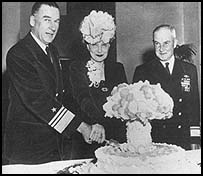
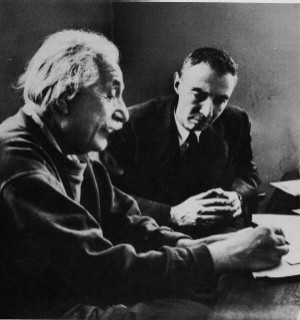 "This new phenomenon would also lead to the construction of bombs, and it is conceivable — though much less certain — that extremely powerful bombs of a new type may thus be constructed. A single bomb of this type, carried by boat and exploded in a port, might very well destroy the whole port together with some of the surrounding territory."
"This new phenomenon would also lead to the construction of bombs, and it is conceivable — though much less certain — that extremely powerful bombs of a new type may thus be constructed. A single bomb of this type, carried by boat and exploded in a port, might very well destroy the whole port together with some of the surrounding territory."
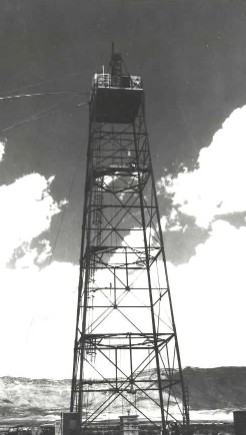 Or so the government claimed. Some people think otherwise. In July of the preceding year, the Port Chicago military base near San Francisco had been destroyed in a massive explosion. The government claimed an ammunition boat full of TNT had exploded, but in retrospect, many questions arose. The boat itself was completely vaporized in the blast. More than 300 people were killed, and much of the base was reduced to dust and slag. Even the nearby town was damaged and hundreds of civilians were injured.
Or so the government claimed. Some people think otherwise. In July of the preceding year, the Port Chicago military base near San Francisco had been destroyed in a massive explosion. The government claimed an ammunition boat full of TNT had exploded, but in retrospect, many questions arose. The boat itself was completely vaporized in the blast. More than 300 people were killed, and much of the base was reduced to dust and slag. Even the nearby town was damaged and hundreds of civilians were injured.
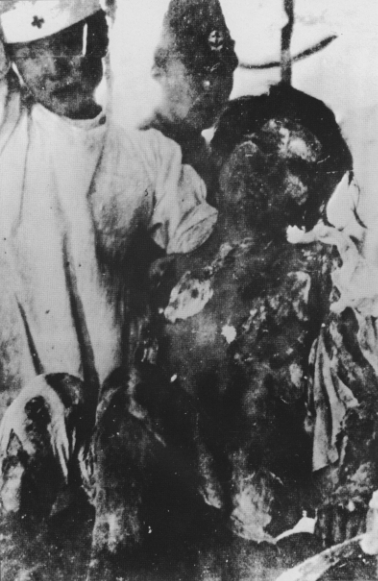 The cities were ordered to be spared conventional bombing, so that the psychological and collateral impact of the atomic bombing would be higher. Leo Szilard, the man who had first come up with the idea, met with Truman's point man on atomic issues, James Byrnes, in late May and begged him to demonstrate the bomb's power on an empty target before unleashing it against human beings.
The cities were ordered to be spared conventional bombing, so that the psychological and collateral impact of the atomic bombing would be higher. Leo Szilard, the man who had first come up with the idea, met with Truman's point man on atomic issues, James Byrnes, in late May and begged him to demonstrate the bomb's power on an empty target before unleashing it against human beings.
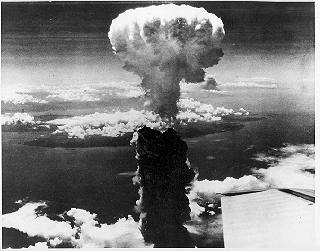 It was the largest number of casualties from a single act in history. The only other event to even come close was the bombing of Nagasaki three days later, which killed at least 40,000 instantly and injured another 25,000. In addition to the casualties on the days of detonation, tens of thousands more would die within two years from injuries and radiation poisoning, and unknown tens of thousands more would see their lives shortened.
It was the largest number of casualties from a single act in history. The only other event to even come close was the bombing of Nagasaki three days later, which killed at least 40,000 instantly and injured another 25,000. In addition to the casualties on the days of detonation, tens of thousands more would die within two years from injuries and radiation poisoning, and unknown tens of thousands more would see their lives shortened.
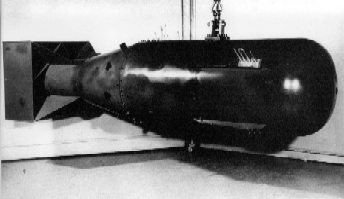 By the mid-1950s, the U.S. had upped the ante of the nuclear arms race, with the introduction of the hydrogen bomb and the thermonuclear bomb, which exponentially increased the destructive power of the atomic arsenal. People began to get alarmed, and their fears were futher stoked when President Dwight Eisenhower's secretary of state first outlined the concept of massive retaliation, threatening to rain down nuclear
By the mid-1950s, the U.S. had upped the ante of the nuclear arms race, with the introduction of the hydrogen bomb and the thermonuclear bomb, which exponentially increased the destructive power of the atomic arsenal. People began to get alarmed, and their fears were futher stoked when President Dwight Eisenhower's secretary of state first outlined the concept of massive retaliation, threatening to rain down nuclear 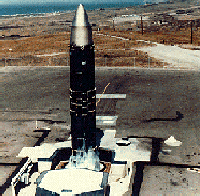 After a tense standoff that left the world on the brink of nuclear war for days, the Soviets blinked, and agreed to remove the missiles. The U.S. and the Soviets agreed to install a hotline for direct communication between the leaders of each nation in the hope of defusing future situations before they could escalate.
After a tense standoff that left the world on the brink of nuclear war for days, the Soviets blinked, and agreed to remove the missiles. The U.S. and the Soviets agreed to install a hotline for direct communication between the leaders of each nation in the hope of defusing future situations before they could escalate.
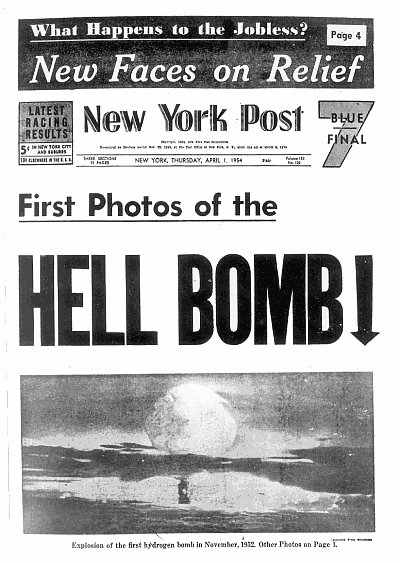 By the mid-1990s, a host of countries had or were rumored to have nuclear programs.
By the mid-1990s, a host of countries had or were rumored to have nuclear programs.